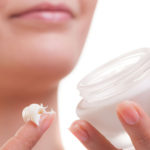If there’s one thing that can make you feel old, it’s discovering that you have age spots on your skin. The name alone can make you cringe, even though it’s not medically correct. Age spots also go by the names liver spots, sun spots, solar lentigines, and senile lentigo. Senile lentigo? That’s almost worse than age spots, especially when you’re neither old nor senile.
Appearance and Causes of Age Spots
You can recognize age spots by their flat appearance and black, brown, or gray spots on your skin. They typically show up on areas of your skin that see the most sun exposure. For most people, that includes the face, back of the hands, forearms, upper back, and shoulders. While it might sound obvious that aging causes age spots, the amount of time you spend in the sun also plays a major role.
Who Develops Age Spots the Most?
Anyone can get age spots, regardless of age, race, or gender. However, the following characteristics increase the likelihood of developing them:
- Having fair skin
- Being over 40 years old
- A history of frequent sun exposure or tanning bed use
- Genetic predisposition to skin pigment changes
You may have age spots for quite a while before you notice them. That is because age spots are painless and have the same texture as your skin. It’s only when you look close enough to see the difference in pigmentation that you realize you have joined the age spot club. While you may find them unsightly, the good news is that age spots are harmless.
Preventing and Treating Age Spots
You can’t always stop age spots from developing, but practicing smart sun safety habits can delay their appearance. For example, avoid prolonged sun exposure between 10 a.m. and 4 p.m. since the sun’s rays are most intense during these hours. Be sure to wear sunscreen with a 15 or greater SPF every day and re-apply every two hours if you go swimming or perspire. Protective clothing, such as a wide-brimmed hat and lightweight long-sleeved shirts, are helpful as well.
Some over-the-counter creams claim to get rid of age spots, but neither makeup nor non-prescription drugs can do that. The best you can do with non-professional treatment is to try to disguise the age spots with a good coverup cream.
Can you Get Rid of Age Spots?
If your goal is to eliminate or diminish the appearance of your age spots, several treatments are available to lighten or remove them. Effective treatments must penetrate this layer since the pigment is located at the base of the epidermis—the topmost layer of skin.
Medications: Prescription bleaching creams (hydroquinone), sometimes combined with retinoids (tretinoin) and a mild steroid, can gradually lighten age spots over several months. Possible side effects include temporary itching, redness, burning, or dryness.
Laser and Intense Pulsed Light: These therapies target and destroy melanin-producing cells without damaging the skin’s surface. Typically, two to three sessions are needed. Ablative lasers remove the top layer of skin.
Freezing (Cryotherapy): This involves applying liquid nitrogen to the spot using a cotton-tipped swab for five seconds or less, destroying excess pigment. As the area heals, the skin appears lighter. This method may cause temporary irritation and carries a slight risk of permanent scarring or discoloration.
Dermabrasion: A rapidly rotating brush sands down the surface layer of skin, allowing new skin to grow. Multiple procedures may be required. Side effects can include temporary redness, scabbing, and swelling, with pinkness lasting several months.
Microdermabrasion: This less aggressive procedure smooths mild skin blemishes through a series of treatments over months. Temporary redness or stinging might occur. It may exacerbate rosacea or tiny red veins on the face.
Chemical Peel: A chemical solution is applied to remove the top layers of skin, allowing new, smoother skin to form. Side effects can include scarring, infection, and changes in skin color, with redness lasting several weeks. Multiple treatments may be necessary for noticeable results.
These procedures are typically performed in a doctor’s office and don’t require hospitalization. The duration and time it takes to see results vary from weeks to months.
Since age spot treatments are considered cosmetic, they are typically not covered by insurance. Given the potential side effects, discuss your options with a dermatologist specializing in skin conditions.
If you are interested in learning your best options, we invite you to visit us at Dermatology Associates. We are well-versed in the latest age spot reduction and elimination treatments and would be happy to help you. For personalized advice and treatment options, call us at 912-354-7546 to schedule your appointment.
Dermatology Associates offers a full spectrum of leading-edge medical, surgical, and cosmetic dermatology services from offices in SavannAs we age, our skin undergoes a number of changes. Among these changes are the appearance of age spots, also known as liver spots or sunspots. These darkah and Vidalia., flat areas on the skin are caused by an increase in melanin production due to prolonged sun exposure and can often be a source of frustration for many people.


